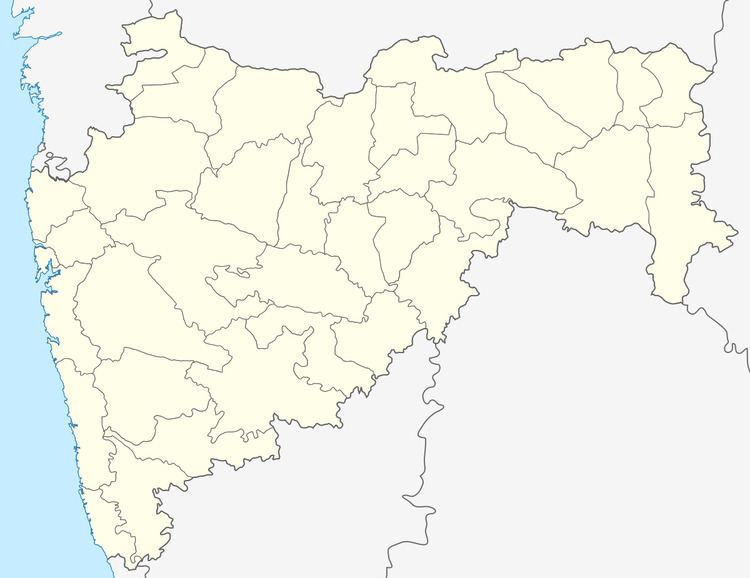Population 6,150 (2001) | Division Nashik Division Local time Sunday 8:18 AM | |
 | ||
Weather 21°C, Wind NW at 6 km/h, 40% Humidity | ||
Lamkani (Marathi:लामकानी) is a small village in the state of Maharashtra, India. It is located in the Dhule taluka of Dhule District in Maharashtra.
Contents
- Map of Lamkani Maharashtra 424307
- Location
- Ecological History
- Lamkanis Resolve Joint Forest Management
- Climate
- References
Map of Lamkani, Maharashtra 424307
Location
Lamkani is located on the junction of Maharashtra State Highway 10 (SH 10) and 12 (SH 12). It is located at 210 05’17.37” N 74034’08.09” E.
Lamkani can be reached from Dhule by taking National Highway (NH 3) up to Sarwad village road junction (18 km) and then taking State Highway 12 (SH 12) toward west direction that passes through Nandane, Burzad, and Boris village, finally reaching Lamkani. It is at a distance of 42 km by route, but this road is well maintained.
Alternately, Lamkani can be reached from Dhule city by Mehergaon route. One can go straight way from Dhule by State Highway 14 (SH 14) up to Mehergaon (18 km) and then taking SH 10 (15 km) that passes through Lamkani. It is at a distance of 33 km by this route and shorter by 9 km.
Ecological History
Lamkani has total 3000 hectares of village catchment area consisting of gaothan - the village site, agricultural land, forest, fallow or waste land. The forest area admeasures about 400 ha. Prior to 1960, the forest area was reasonably rich in tree and grasses to the extent that it could fulfill the requirements of small size timber for farm implements, fuel wood for cooking, grasses and fodder for cattle, then village population, as told by the village elders living in the village. With the availability of this natural resource and farm grown fodder the villagers practiced animal husbandry and kept milch cattle like cows and buffaloes. The agriculture was irrigated from dug out wells which later on shifted to tube wells. The locality of Lamkani receives average annual rainfall of 400 mm. and therefore falls in the category of ‘‘Drought Prone Area as defined by the District Administration. However, during last five decades there has been gradual and perceptible erratic rainfall pattern in this locality as experienced by the villagers. This is reported to affect crop yields adversely and so was the impact on the vegetation around that included the forest area. So also with increase in human population from sixties to nineties coupled with cattle population, the biotic pressure on the forest gradually increased which caused the degradation of tree growth and loss of grasses. The heavy grazing by the cattle resulted stoppage of regeneration of new grasses due to no seeding of seeds and trampling of new grasses. The ecological conditions of the village deteriorated over period of time. The number of cattle slowly reduced due to lesser fodder and grass availability. The dairying profession was reduced and finally had to be completely abandoned. The water levels in the wells dropped creating shortage of water for villagers and their cattle which necessitated villagers to search for deeper sources that came from handy in the form of tube wells; thanks to the drilling technology. During 1997–2000, the village saw drilling of about 200 tube wells to augment the water requirements. So also the villagers saw deeper drilling to reach water table that dropped from average of 350 feet to 950 feet. The water scarcity however could not improve. The village was required to be supplied water by tanker from other places. That was perhaps the worst point of time - the year 2000, in the ecological history of the village. All Information From Ravi Nanabhau Girase
Lamkani's Resolve – Joint Forest Management
The villagers in the year 2001 came together and formed Joint Forest Management Committee as per Government of Maharashtra Scheme.
Climate
Lamkani has three distinct seasons during the year: summer, winter, and the rainy season.
Summer months are hot and spread over April, May and June. The day time temperature reaches up to 43 0 C. May is the hottest month. Dusty and hot winds of varying velocity are common during summer. Winter is spread over November to mid-February. Winter temperature drops down to minimum 10 0 C. Snowfall and smog are unknown. However hailstorms of mild intensity are occasionally reported.
Rainy season starts by mid-June and lasts till September. The average annual rain fall is 350 mm spread over about 45 rainy days. The nearest rain gauge station is at Dhule. Rains are received from the South- West mansoon winds. Showers from North – East mansoon are very rare. Lamkani has very erratic rainfall pattern. During the rainy monsoon season the skies are moderately clouded. For the rest of the year skies are mostly clear.
During the South-West monsoon season the humidity is about 60 per cent. The air is dry during the rest of the year. The driest part of the year is of course summer when the relative humidity is about 20 per cent at the mid day.
